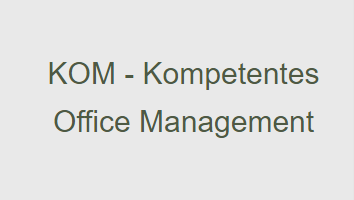

These examples are not helpful?
Just give me a call.
Tel.: +49 (0) 251 1420632

Examples
Here are a few examples:
1. Export of a book post to the USA
Markus G. wants to send a book post composed of 5 sets of antiquarian books to the US. The friendly civil servant at the post office counter explains that he will need an export accompanying document form the customs.
Markus drives to the local customs office. The customs officer shakes his head and says: “Please turn to the customs broker KOM. The declarant will be able to help you!” The officer hands over a route planner with the turn-by-turn directions.
Markus, meanwhile quite annoyed, makes his way to the customs agent. The agent asks him whether he has prepared a proforma invoice, in order to indicate the value of the shipment to the customs authorities.
Markus nods. At least he has prepared a proforma.
The customs agent declares that Markus will not need an EORI number, since he is a private individual and the shipment has a private character.
Thereupon Markus enquires: “What’s the meaning of private character in this context?”
The answer: “Private character means that you want to export one set of books. If you export 50 or 100 sets of books, this will have a commercial character, and you would need an EORI even though you are a private individual”.
The declarant rolls up his sleeves and gets to work. About 15 minutes later he prints a prints a routing slip for customs declaration that he hands over to Markus.
NOW Markus can drive to the customs office again and, after receiving the EAD, he can bring the parcel to the post office.
2. Export of a vehicle to Switzerland
A Swiss citizen, to simplify matters let’s call him Urs, wants to buy a used camper van from a German car dealer.
Urs asks the dealer, company AUTO FAHN, to contact the customs agent KOM.
In the conversation with the customs agent the dealer learns that he will need to have an EORI-number. AUTO FAHN, however, so far has not yet sold any cars to third countries and, for that reason, does not have an EORI. AUTO FAHN applies for an EORI by faxing the application form to the Generalzolldirektion Dresden (General customs directorate) and afterwards prints a transmission report. The application form and the transmission report must be shown to the customs officers, when the car is presented to the customs office in charge. So customs declaration can be executed before the EORI has actually been issued.
Since AUTO FAHN wants to make sure that there will not be any problems with the German tax authorities, a customs plate and an international registration document are prepared at the local traffic office.
In the meantime Urs has investigated which customs duties and taxes he will have to pay in Switzerland:
- 15.00 CHF per 100 kg weight (rate of duty)
- 4 % tax on motor vehicles (net purchase price)
- 8 % VAT on the net purchase price indluding tax and duties
Tax on motor vehicles and VAT are inevitable. The rate of duty, however, can be avoided, if a movement certificate EUR.1 for the car can be submitted to the Swiss customs authorities. The EUR.1 can be issued, if the car has been produced in the EEC. Now Urs asks company AUTO FAHN to request a supplier’s declaration from the vehicle manufacturer.
After that AUTO FAHN sends an e-mail with all documents to the customs agent KOM.
KOM sends an electronic export declaration to the customs office in charge, fills in the movement certificate EUR.1 and sends the documents by post to AUTO FAHN.
Some days later Urs picks up the car. Company AUTO FAHN hands over the registration certificates, the invoice, a COC-document, the EUR.1 and the routing slip for customs declaration that they received from KOM.
Urs drives to the local customs office. The customs officers check the documents and the car’s VIN print the export accompanying document (EAD) and stamp the EUR.1.
Urs hits the road back to Switzerland.
3. Export of a machine to Japan
Company XYZ (the exporter) wants to ship a machine by sea freight to Japan. The machine will be loaded into a container and will be exported to Japan from Hamburg seaport.
The exporter sends his invoice to the customs agent KOM. The invoice includes all essential information: number of the invoice, EORI-number of the exporter, description of the goods, the customs tariff number of the machine, net weight and gross weight, information on packaging as well as the origin of goods.
As the exporter has already clarified all details with his forwarding agent, he is even able to advise KOM of the name of the vessel and the number of the container.
Thereupon KOM compiles an export declaration with a presentation of goods to customs on the premises of the exporter. The export declaration has to be sent to the customs no later than 2 hours before closing time of the local customs office on the day before loading is effected.
KOM enters a period for the presentation of goods into the export declaration beginning at 9:00 am to 01:00 pm on the very next day.
On the next day, at shortly after 1:00 o’clock, KOM receives the export accompanying document a .pdf-file that he sends per email to the exporter.
The exporter prints the EAD and hands the document over to the driver when the container is collected by the forwarding agent. Just to be on the safe side, the exporter emails the EAD to his contact person at the forwarding agency.



